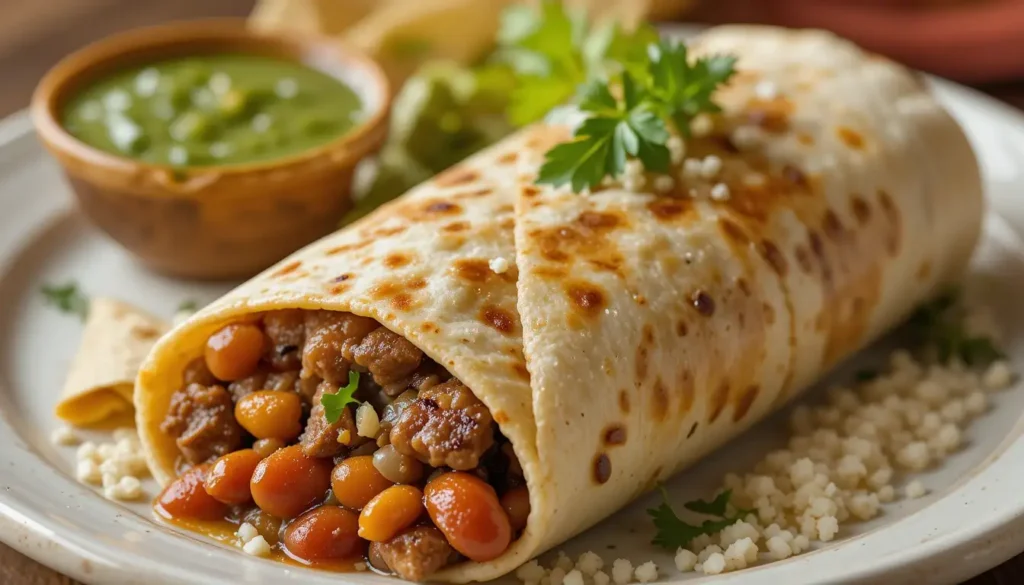Before we explore what do authentic burritos have, it’s important to understand where these humble wraps come from. Burritos, believe it or not, are deeply rooted in Mexican culinary traditions. However, their exact origin story still stirs some debate.
Table of Contents
Understanding the Origin of Burritos
Where It All Began
The word burrito literally translates to “little donkey” in Spanish. Some believe the name originated because of the shape of the burrito—it resembles the packs donkeys used to carry. Others think it comes from the way they were often sold in Mexican border towns by vendors who used donkeys to transport food.
Burritos are traditionally associated with Northern Mexico, particularly regions like Chihuahua and Sonora. Unlike the massive, ingredient-heavy burritos popularized in the U.S., the original Mexican burritos were simple, small, and packed with just a couple of ingredients—usually something like stewed meat, beans, or cheese.
The Influence of Mexican Immigrants
When Mexican immigrants brought burritos across the border into the United States, the dish began to evolve. In states like California and Texas, burritos transformed into larger, more complex versions. This gave rise to iconic variations like the “Mission-style burrito” of San Francisco or the Tex-Mex-style burritos.
However, as delicious as these adaptations can be, they don’t quite represent the authentic burrito. Authentic burritos remain a simpler, more rustic dish deeply tied to Mexican tradition and flavors.
What Defines an Authentic Burrito?
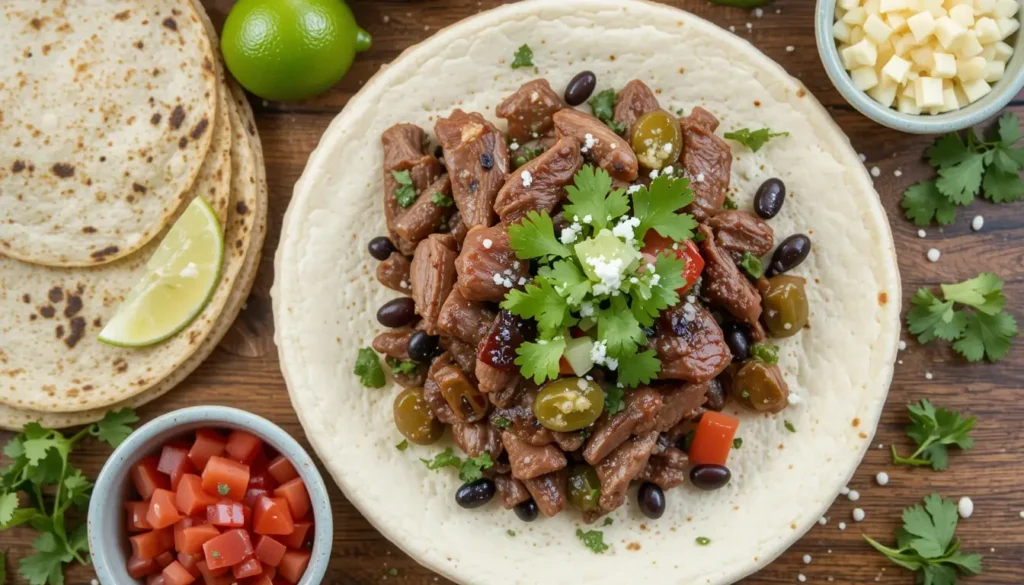
So, what exactly separates an authentic burrito from the countless imitations out there? Let’s break it down into key elements:
- Simplicity: Authentic burritos don’t go overboard with toppings. They focus on quality, not quantity.
- Ingredients: Traditional burritos use fresh, locally sourced ingredients, sticking to meats, beans, cheese, and a light salsa.
- Tortilla: The tortilla is crucial—thin, soft, and made with flour. Corn tortillas are more common for tacos, while burritos typically rely on flour tortillas.
- Flavor: Seasoning is king! Authentic burritos rely on robust, homemade flavors like slow-cooked meats and fresh salsas.
Let’s take a closer look at each of these components.
Traditional Ingredients in Authentic Burritos
Here’s where authenticity shines through: the ingredients. When it comes to what authentic burritos have, the focus is on traditional, uncomplicated fillings.
- Meat: The heart of an authentic burrito is often meat—slow-cooked beef (like carne asada or barbacoa), or chicken stewed with rich, earthy spices. These meats are flavorful and tender, cooked to perfection using traditional techniques.
- Beans: Refried beans or black beans add a creamy texture and earthy flavor. In Mexico, beans are often seasoned with lard, garlic, and spices to enhance their taste.
- Cheese: Authentic burritos usually include Mexican cheeses like queso fresco or Oaxaca cheese. These cheeses are mild, creamy, and perfect for melting.
- Salsa: Simple, homemade salsas—like pico de gallo or salsa verde—add a burst of freshness and acidity. Unlike Tex-Mex burritos drowning in sauce, authentic versions use salsa sparingly to complement the other flavors.
The Role of Tortillas: Flour vs. Corn
When people ask, “What do authentic burritos have?” they often overlook the tortilla, but it’s one of the most critical elements.
Authentic burritos always use flour tortillas. Why flour, you ask? Northern Mexico, where burritos originated, has a long tradition of wheat cultivation. Flour tortillas are soft, pliable, and perfect for wrapping the fillings tightly without tearing. They’re also thinner than their store-bought counterparts, making them ideal for creating a balanced bite.
In contrast, corn tortillas are more common in Southern Mexican dishes like tacos and enchiladas. While delicious, they’re less flexible and don’t suit the structure of a burrito.
Types of Authentic Burritos Across Regions
Did you know that authentic burritos can vary slightly depending on the region? While the basic principles remain the same, subtle differences in fillings and preparation make each region’s burrito unique.
Northern Mexico’s Burrito Tradition
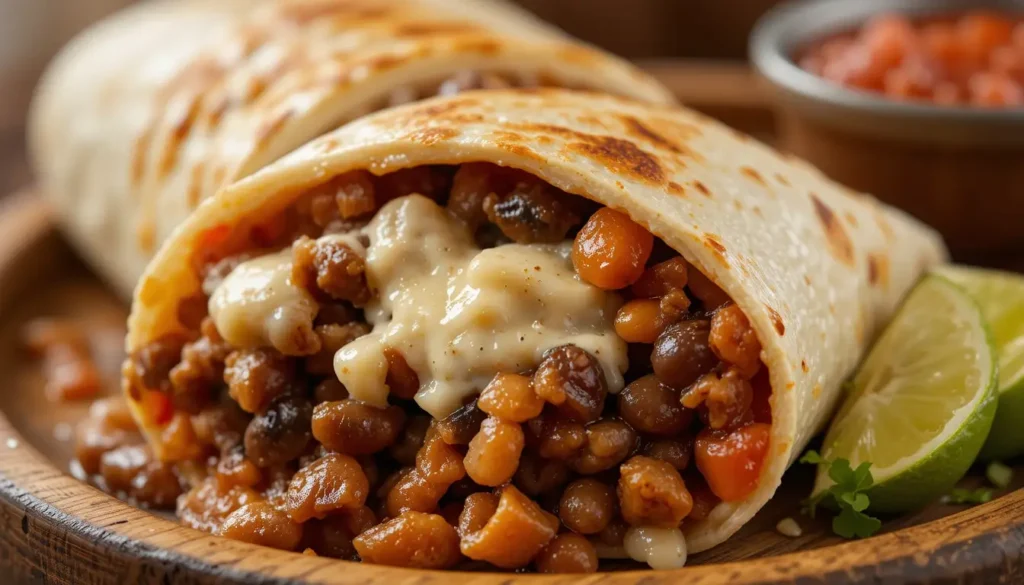
In places like Chihuahua and Sonora, burritos are small, handheld, and incredibly simple. A typical burrito might contain nothing more than:
- Stewed or grilled meat
- Beans
- Cheese
That’s it—no rice, guacamole, or sour cream. Northern Mexican burritos prioritize flavor and tradition, letting the core ingredients shine.
California-Style Burritos: Are They Authentic?
California has made burritos famous, particularly the “Mission-style burrito” born in San Francisco. These burritos are enormous, stuffed with rice, beans, meat, cheese, sour cream, guacamole, and salsa. Delicious? Absolutely. But authentic? Not quite.
While Mission-style burritos have become a beloved variation, they stray far from the simplicity of authentic Mexican burritos.
Common Myths About Burritos
As burritos have gained popularity worldwide, plenty of misconceptions have popped up. Let’s debunk some of the most common myths.
Debunking the “Loaded Burrito” Myth
Many people think the bigger the burrito, the better. But authentic burritos tell a different story. Traditional versions focus on flavor, not sheer size. Overloading a burrito with too many ingredients can overwhelm the palate and mask the subtle flavors of the fillings.
Are Burritos Always Spicy?
Not necessarily! While Mexican cuisine is known for its bold use of spices, authentic burritos aren’t always spicy. The heat level comes from the salsa, which can be adjusted based on personal preference. Some traditional burritos rely on earthy, savory flavors rather than spice.
What Should Authentic Burritos Avoid?
Now that we’ve discussed what authentic burritos have, it’s equally important to highlight what they don’t include. With so many variations of burritos out there, it’s easy to confuse authenticity with adaptation. Let’s clarify a few common mistakes.
Overloading with Fillings: The Mistake
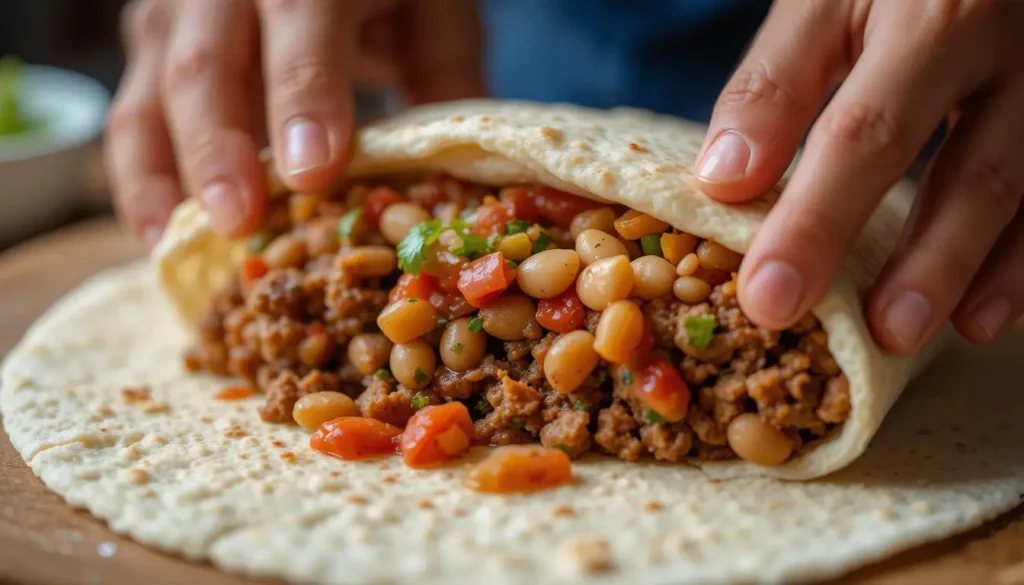
One of the hallmarks of authentic burritos is simplicity. Adding too many ingredients—like rice, lettuce, sour cream, or guacamole—distracts from the core flavors. Sure, those ingredients might taste good together, but they dilute the authenticity.
Authentic burritos focus on a balance between the tortilla and the filling. Imagine biting into a burrito that’s bursting at the seams—you’re left with a messy experience that’s all filler and no flavor. Traditional burritos prioritize quality over quantity. A perfectly sized burrito should be handheld, easy to eat, and every bite should give you a consistent taste of its core ingredients.
Excessive Use of Non-Traditional Ingredients
It’s tempting to get creative with burritos, especially in fusion cooking. While there’s nothing inherently wrong with this, it veers away from tradition. Authentic burritos avoid:
- Pineapple chunks or fruit-based sauces.
- Sushi rice, quinoa, or other grain substitutes.
- Non-Mexican cheeses like cheddar or mozzarella.
- Heavy, creamy sauces or mayonnaise-based spreads.
The beauty of an authentic burrito lies in its simplicity and use of ingredients that stay true to Mexican cuisine. Non-traditional ingredients might elevate modern variations, but they have no place in the authentic version.
Meat Choices in Authentic Burritos
At the heart of an authentic burrito is the meat. Traditional burritos rely heavily on well-prepared, flavorful proteins that bring the dish to life. Let’s explore some of the most common options.
Beef and Chicken: Traditional Options
Authentic burritos feature slow-cooked, tender meats seasoned with rich spices. Here are the most popular options:
- Carne Asada: This grilled, marinated beef is a staple in Northern Mexico. It’s tender, juicy, and packed with smoky, earthy flavors. Carne asada is usually seasoned with lime, garlic, cumin, and a touch of chili.
- Pollo Guisado: Chicken stewed in tomatoes, onions, garlic, and spices is a comforting and flavorful option. The slow cooking process ensures that every bite is tender and packed with flavor.
Each type of meat brings something unique to the table, but they all share a common factor: careful preparation. Authentic meats are never bland—they’re seasoned with bold, traditional spices that enhance their natural flavors.
The Importance of Cooking Techniques
What sets authentic burrito fillings apart is how they’re prepared. Unlike mass-produced meats, traditional proteins are cooked low and slow. This allows the flavors to develop fully and ensures the meat is tender and juicy.
Take barbacoa, for example—this slow-cooked beef is prepared by marinating the meat in spices, wrapping it in leaves (like banana or maguey), and cooking it over an open fire or in a pit. The result? Incredibly tender, flavorful meat that practically falls apart.
Cooking techniques like braising, stewing, or grilling are vital to achieving the rich, rustic flavors that define authentic burritos. You simply can’t rush perfection.
What Sauces and Salsas Do Authentic Burritos Have?
When it comes to authentic burritos, sauces and salsas play a supporting role. They’re not the star of the show, but they add a necessary layer of flavor that ties everything together.
Homemade Salsas: A Key Component
Authentic burritos often include one or two types of salsa, and they’re always homemade. Store-bought sauces? Not here. Mexican salsas are simple yet bursting with fresh, vibrant flavors.
- Salsa Roja: A classic red salsa made from tomatoes, chili peppers, garlic, and onions. It’s smooth, slightly spicy, and full of depth.
- Salsa Verde: This tangy green salsa is made from tomatillos, green chili peppers, cilantro, and lime. It adds brightness and acidity to balance the rich fillings.
- Pico de Gallo: Also known as fresh salsa, pico de gallo combines chopped tomatoes, onions, cilantro, lime juice, and a touch of salt. It’s light, refreshing, and perfect for adding a pop of freshness.
Balancing Spice and Flavor
Mexican cuisine is all about balance. Authentic salsas aren’t designed to blow your taste buds off with overwhelming heat. Instead, they complement the burrito’s filling with a mix of spice, acidity, and freshness.
If you’ve ever had a burrito dripping in creamy, heavy sauces, you know it can mask the delicate flavors of the meat and beans. That’s why authentic burritos keep it light and simple when it comes to salsas—just enough to enhance the dish, not overpower it.
Authentic Burritos vs. Fast-Food Burritos
We’ve all seen those giant burritos at fast-food chains—loaded with rice, lettuce, sour cream, and an endless list of fillings. While tasty in their own right, they couldn’t be further from the simplicity of an authentic burrito.
Ingredients: Freshness vs. Processed
Authentic burritos prioritize fresh, homemade ingredients. The tortillas are handmade, the beans are slow-cooked, and the meats are prepared with care. Fast-food burritos, on the other hand, often rely on processed ingredients, pre-cooked meats, and heavy sauces.
Portion Size and Preparation Differences
Fast-food burritos are notorious for their massive portions. They’re built to be filling, not necessarily flavorful. Authentic burritos, however, are smaller and more refined. They focus on quality over quantity, ensuring that every bite delivers a balance of flavors.
Tips for Making Authentic Burritos at Home
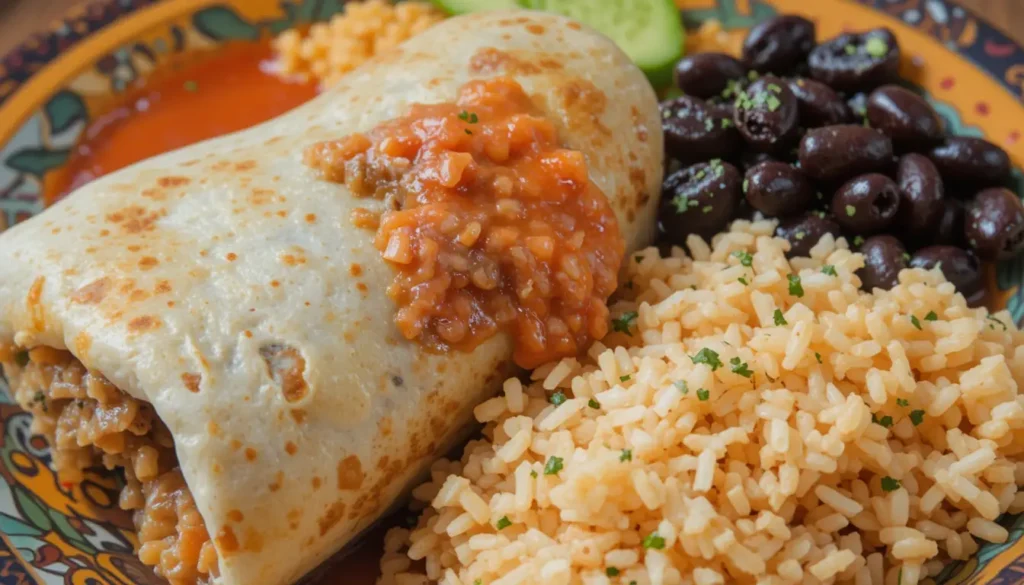
Now that we know what authentic burritos have and what sets them apart, you might be wondering: can you recreate them at home? Absolutely! With a little patience and the right techniques, you can make burritos that are true to their Mexican roots. Here’s your ultimate guide to crafting the perfect authentic burrito.
Essential Ingredients and Tools
To start, you’ll need high-quality, traditional ingredients. Here’s a checklist to make sure you’re prepared:
- Flour Tortillas: Choose thin, fresh tortillas—homemade if possible. If you’re buying from a store, look for Mexican brands with minimal ingredients.
- Protein: Opt for carne asada (grilled beef), or pollo guisado (stewed chicken). For a vegetarian option, go with refried beans or nopales (cactus).
- Beans: Use whole black beans or creamy refried beans seasoned with garlic and spices. Avoid canned beans when possible; homemade always tastes better.
- Cheese: Stick to traditional Mexican cheeses like queso fresco, Oaxaca cheese, or a mild crumbly cheese.
- Salsa: Prepare a fresh, homemade salsa like salsa verde, pico de gallo, or salsa roja.
- Cooking Tools: A cast-iron skillet or comal (flat griddle) is perfect for warming tortillas and grilling meats. You’ll also need a slow cooker, pot, or grill for your protein.
The secret to success? Fresh, high-quality ingredients. When it comes to authentic burritos, less is more—but what you include should be absolutely top-notch.
Step-by-Step Burrito Preparation
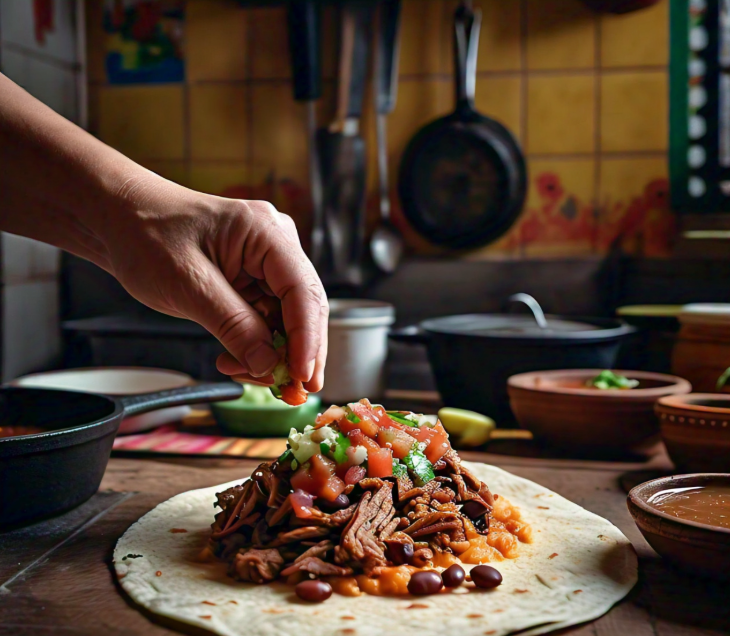
- Prepare the Meat
- Start by marinating your protein of choice. For carne asada, use lime juice, garlic, cumin, and salt. Let the meat marinate for at least an hour. For stewed chicken or carnitas, cook the meat low and slow until tender and flavorful.
- Cook the Beans
- If you’re using whole black beans, simmer them with garlic, onions, and a touch of salt. For refried beans, mash them with a bit of lard or oil and season with cumin and chili powder.
- Make the Salsa
- Blend ripe tomatoes or tomatillos with chili peppers, garlic, and onions. Adjust the seasoning with lime juice, salt, and cilantro for that authentic kick.
- Warm the Tortillas
- Heat your tortillas on a dry skillet or comal over medium heat. This keeps them soft, pliable, and warm—perfect for wrapping.
- Assemble the Burrito
- Lay the tortilla flat and add a layer of meat or beans. Top with cheese and a spoonful of salsa. Keep the fillings minimal to maintain authenticity.
- Fold the sides inward and roll tightly from the bottom. A properly wrapped burrito should hold its shape without spilling.
- Serve Immediately
- Authentic burritos are best enjoyed fresh and hot. Pair them with a side of lime wedges, fresh salsa, or a sprinkle of cilantro.
The Perfect Accompaniments for Burritos
What should you serve with authentic burritos? While burritos are satisfying on their own, pairing them with classic Mexican sides can elevate your meal to the next level.
Classic Sides: Rice, Beans, and More
- Mexican Rice: Lightly seasoned rice cooked with tomatoes, garlic, and cumin is a traditional and flavorful side dish.
- Frijoles de la Olla: Whole black beans or pinto beans cooked simply with garlic and onions. These beans add an earthy, wholesome flavor to any burrito meal.
- Grilled Vegetables: Charred onions, peppers, or zucchini add a smoky sweetness that complements burritos perfectly.
- Pickled Onions and Jalapeños: These tangy additions provide a zesty kick that balances rich, savory burrito fillings.
These accompaniments stay true to Mexican cuisine and ensure your meal feels both authentic and complete.
FAQs
What makes a burrito truly authentic?
An authentic burrito focuses on simplicity and tradition. It combines fresh, high-quality ingredients like slow-cooked meats (carne asada or carnitas), beans, and homemade salsa. Unlike modern variations, authentic burritos steer clear of excessive fillings like rice, sour cream, or guacamole. Instead, they let the bold, traditional flavors shine through.
Should rice and guacamole be part of an authentic burrito?
Not at all! While rice and guacamole taste great, they don’t belong in an authentic burrito. Those ingredients became popular in modern, Americanized burritos, such as Mission-style versions from California. Traditional burritos keep things simple with meat, beans, cheese, and a touch of salsa.
What kind of tortillas do authentic burritos use?
Authentic burritos always use flour tortillas. In Northern Mexico, where burritos originated, people relied on flour tortillas because they are thin, soft, and easy to fold without tearing. They also wrap the fillings snugly, creating a neat and portable meal.
Which types of meat go into authentic burritos?
Traditional burritos usually feature slow-cooked and well-seasoned meats. Favorites include carne asada (grilled beef) and pollo guisado (stewed chicken). These meats are carefully prepared with bold spices and cooked slowly to bring out tender, rich flavors.
Can a vegetarian burrito still be authentic?
Yes, it can! Authentic vegetarian burritos rely on traditional Mexican ingredients like refried beans, black beans, roasted poblano peppers, or nopales (cactus). By using these simple, flavorful fillings, a vegetarian burrito stays true to its Mexican roots without missing a beat.
What types of salsas work best in authentic burritos?
When it comes to authentic burritos, homemade salsas make all the difference. Simple options like salsa roja (spicy red salsa), salsa verde (tangy green tomatillo salsa), or pico de gallo (fresh tomato salsa) bring brightness and balance to the dish. These salsas complement the fillings without overpowering the other flavors.
Final Thoughts on Authentic Burritos
So, what do authentic burritos have? Simplicity, tradition, and flavor. Authentic burritos stick to their roots, focusing on fresh ingredients, carefully cooked proteins, and handmade flour tortillas. They avoid unnecessary frills and showcase the rich culinary heritage of Mexico.
The next time you crave a burrito, take a step back and think about what makes it special. Whether you’re enjoying one in a Mexican border town or making your own at home, remember that authentic burritos are about celebrating tradition, one bite at a time.
If you’re ready to embrace the art of making authentic burritos, keep it simple, savor every ingredient, and enjoy the process. Buen provecho!
For further culinary insights and delicious comparisons, check out the rest of the Tasty Makings Archive.

